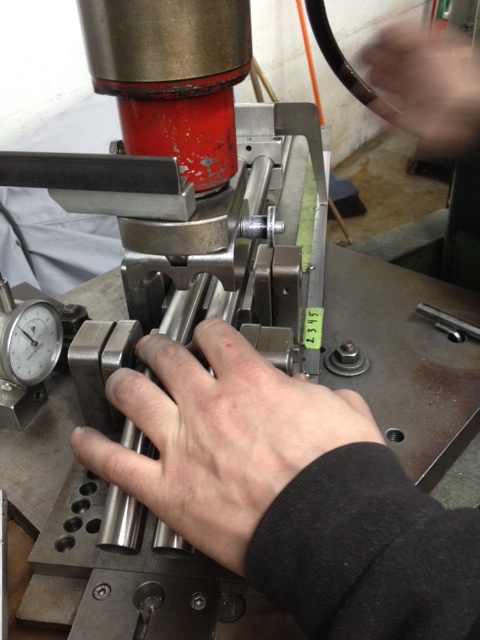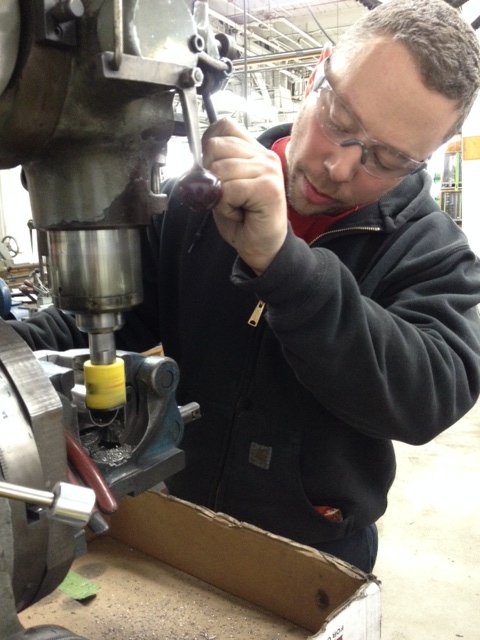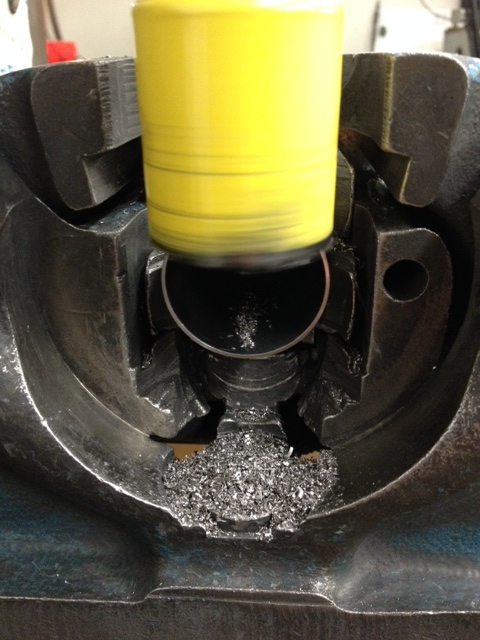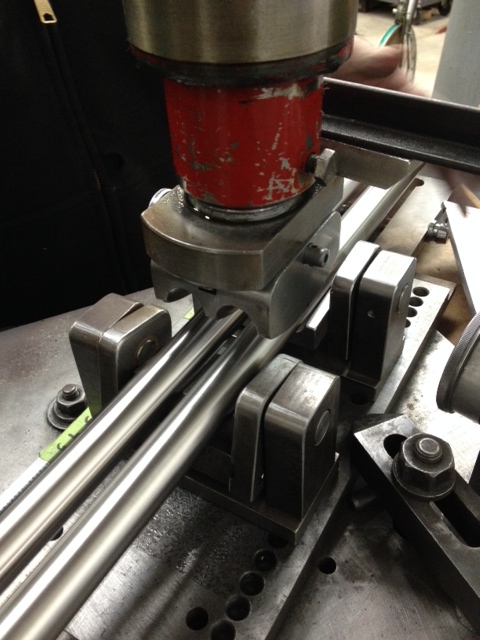My friend Matt Sutton is in charge of machining the tubes of my bike. This is great news, not because he is any better at machining than the other machinists, but because Sutts’ audiophilia is currently through the roof, just like mine. He recently stepped up to a new pair of high quality bookshelf speakers to go with his tube amp, and I have some interest in learning about that, so in addition to pestering him about my bike, I also grill him with questions about his audio equipment. I’ll bet he enjoys that as much as I do.
While Sutts waxes poetic about his new KEFs, he picks up an empty box, and starts collecting the small parts needed to build my frame; two 6/4 titanium drop outs and a 68mm bottom bracket are the first to get dropped in. Tube selection comes next. We have an enormous variety of straight gauge titanium tubes, in all different diameters and wall thicknesses. They extend from floor to ceiling, forming a hallway at one end of the machining department.
Like an Olympic pole vaulter, Sutts maneuvers the eighteen foot tube into the cut-off lathe. The build sheet says that my seat tube is to be 16.5″ long, which is exactly where Sutts cuts it, and in to the box it goes. When he’s done, there are nine straight sections of tubing and a pair of drop outs.
I’m not a machinist, but this first step seems far easier than what comes next, which is the tube butting process. By making an already thin tube wall even thinner, the ride characteristic of the tube is changed. For a given diameter, a thinner tube wall will yield a more compliant ride. My bike already has cushy tires and a plush suspension fork, but even still, I’ll appreciate the give these butted tubes will provide. Each individual tube is butted for the individual rider. Your bike and my bike could end up with the exact same tube diameters, but the wall thickness will almost certainly be different, and so will the resulting ride.
After butting, the tubes start taking shape. The down tube gets curved to create enough clearance for the fork’s crown to pass underneath without contact. I will crash this beautiful bike. This I know. And there will be damage to my components and my pride, but not to the underside of my down tube.
In order to fit one tube precisely to the next, Sutts copes the ends of each.
On our full titanium frames, we give the chain and seat stays an “S” bend. Stays are bent two at a time in a hydraulic press at room temperature. When each bend is complete, they are inspected on the alignment table to make sure the bends are accurate. The chain stays also receive a squish, in my case a big squish, to achieve clearance for a burly tire.

My chain stays are 17.2″ long, will accept a 2.4″ tire on a 27.5″ wheel, and will allow clearance for my 32 tooth chain ring. You can probably imagine that there are a few thousand variations on chain stay designs. I find it fascinating.
The finish line of the machining process is the jig, where the frame builder can see his or her work come together. Once the jig is mocked up to the appropriate angles and measurements, each piece of my frame is put into place. For the very first time, and only for a shining moment, the shape of the frame is revealed.
If you listen carefully, you can hear the beautiful sounds of a far away choir, at least I think I can. The jig rolls to welding, and I pace with excitement.




